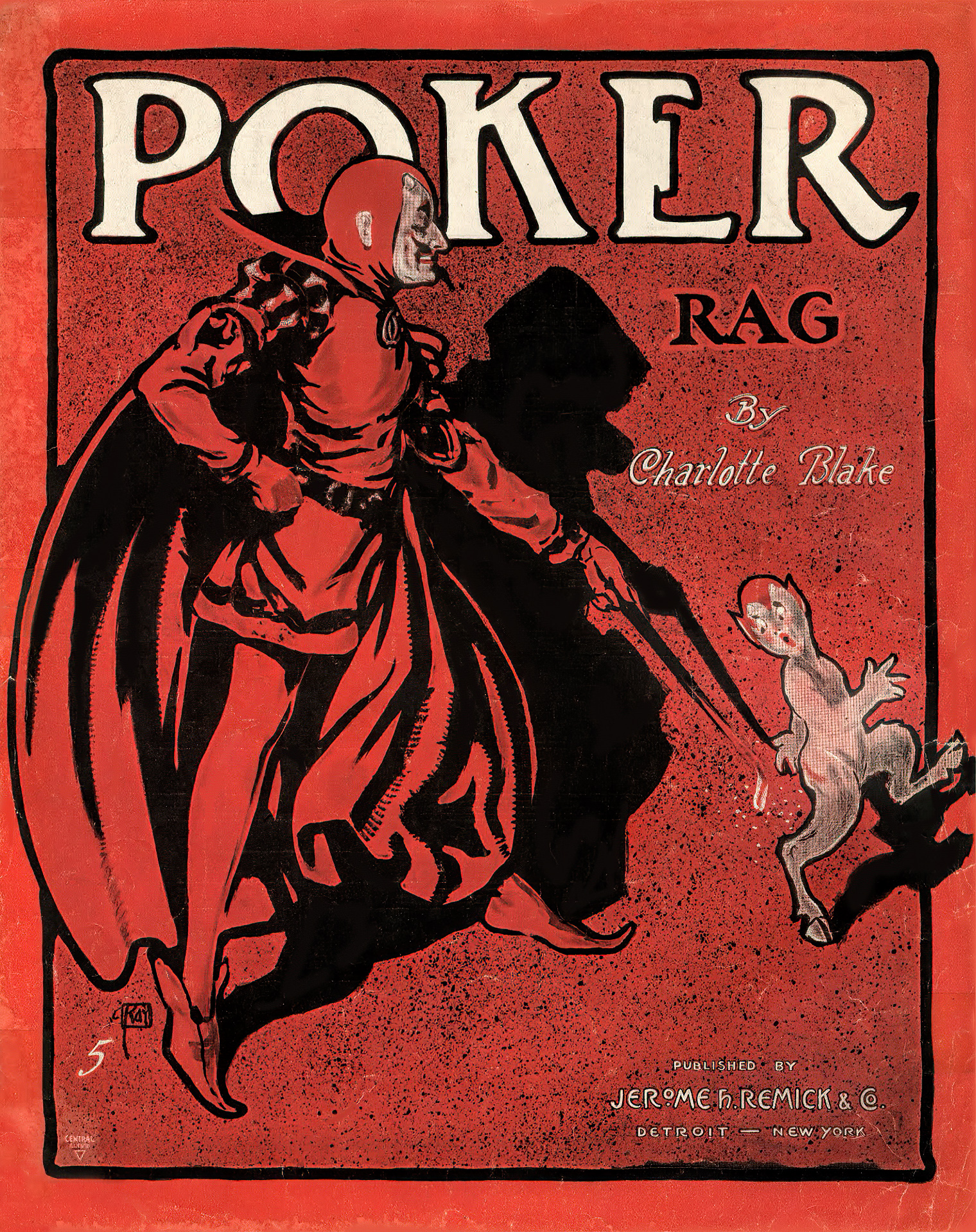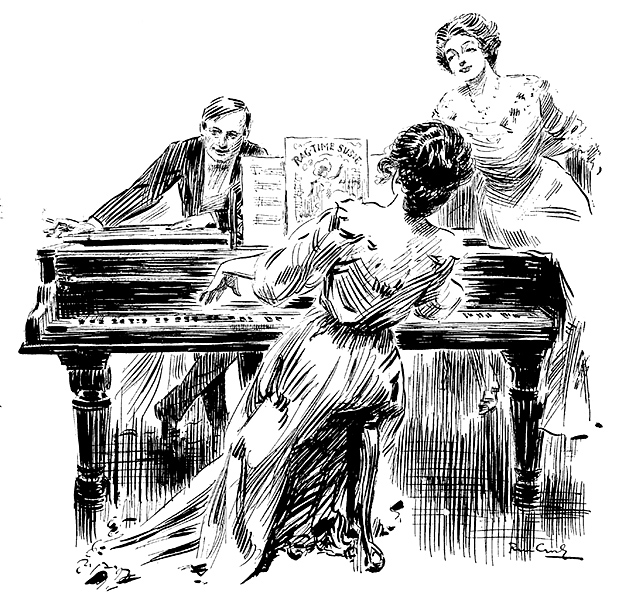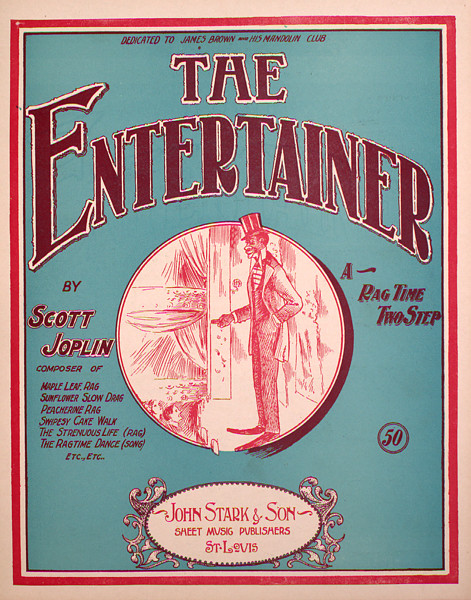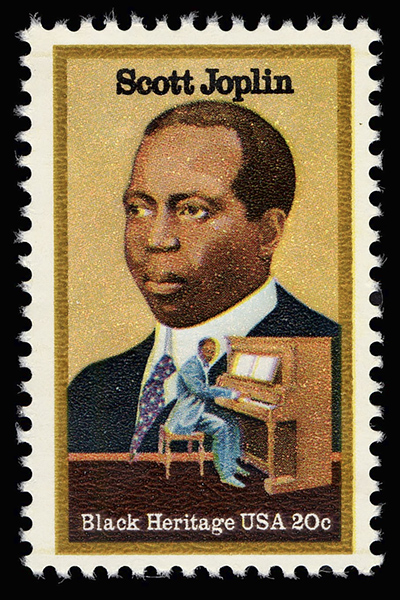|
|
||||||||||||||||||
|
5 | Music In The 19th CenturyAmerican RagtimePeter Kun Frary
.
|
Chopin, Beethoven and Liszt were popular with pianists in the United States. However, Americans were beginning to create their own repertoire, and ragtime or rags was the first truly American style to gain wide popularity both at home and abroad. Indeed, the sound of ragtime eventually became irrevocably associated with turn of the century Americana. |
Origins
Ragtime began in middle class African-American communities in St. Louis, Missouri, and other US cities during the late nineteenth and early twentieth centuries.
United States | Wikimedia Commons

Before achieving widespread popularity, ragtime existed as an improvised solo piano style, influenced by jigs and marches played by African-American brass bands. Folk ragtime was performed spontaneously for many years in supper clubs, saloons, gambling halls and bordellos.
There is no exact date for origin of the rag, but celebrated ragtime composer Scott Joplin (1868-1917) claimed there has been "ragtime music in America ever since the Negro race has been here, but the white people took no notice of it until about twenty years ago [1890s].†
Swipesy | Scott Joplin and Arthur Marshall (c. 1900) | Before audio recording, sheet music was the main method of distributing hit songs. | Library of Congress
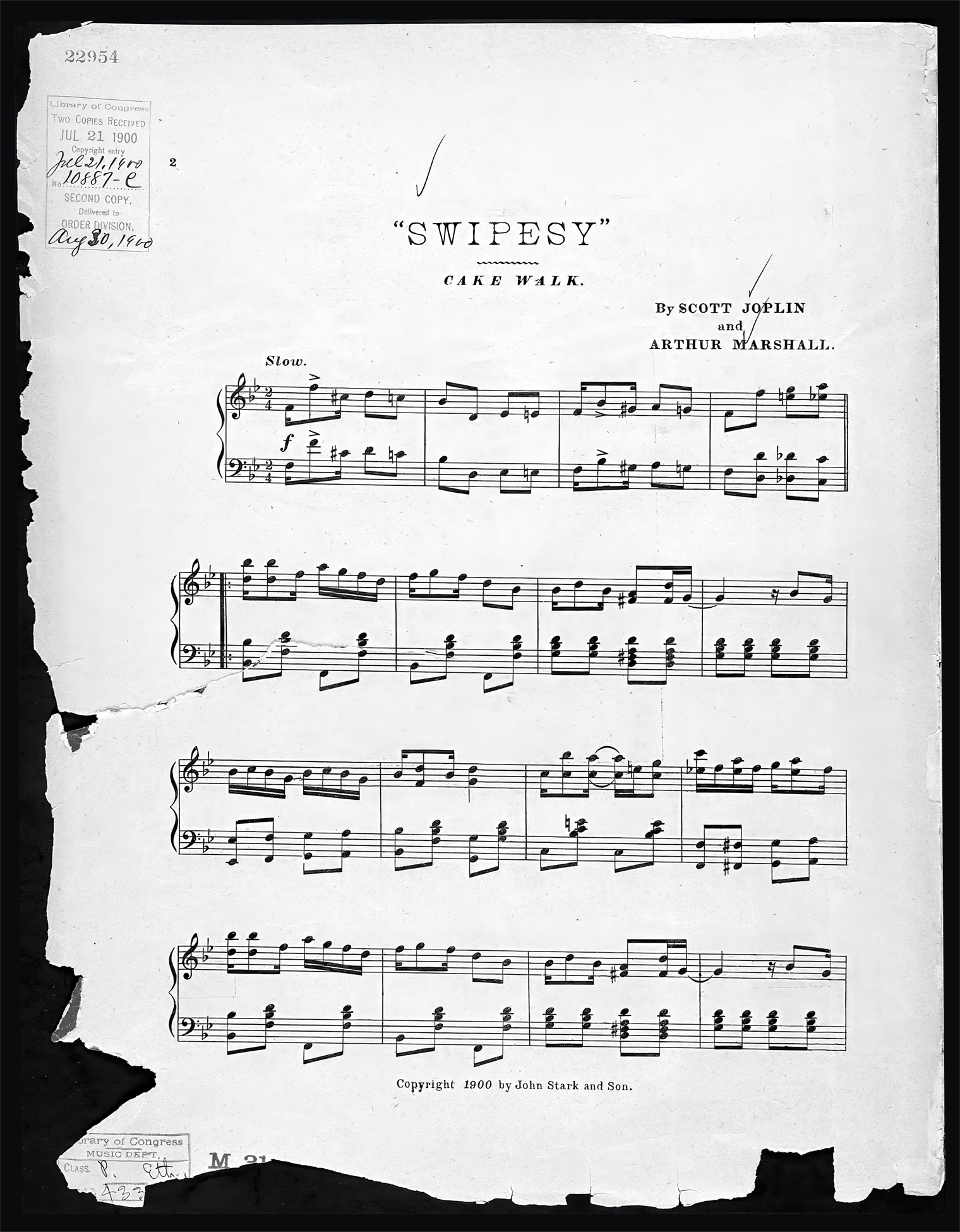
 Sheet Music Publication
Sheet Music Publication
Ragtime was introduced to middle America, and much of the world, by Scott Joplin during the 1893 World's Fair in Chicago. He was a sensation and Americans not only clamored to hear ragtime piano, but wanted to play rags themselves. Sheet music wasn't available yet and commercial audio recording and radio didn't exist. There was a pent-up demand waiting to be fulfilled.
Beginning with sheet music publication in the mid-1890s, ragtime catapulted into the musical mainstream. First out the gate, African-American entertainer and composer, Ernest Hogan (1865-1909), published the earliest known piano rags in 1895: La Pas Ma La (M. Witmark and Sons, Chicago) and a second piece with a controversial title. The second title is too offensive to mention here but Victorian sensibilities were different than today and it became a hit—selling a million copies of sheet music! The curious may Google or visit Wikipedia.
Tom Fletcher stated that Hogan was the "first to put on paper the kind of rhythm that was being played by non-reading musicians."†† Flectcher's words hint at the original improvisatory nature of the rag. The following year, Ben Harney (1872-1938) published a popular piano rag, You've Been a Good Old Wagon but You Done Broke Down, and so begins the flood of rags into middle America.
Sugar Cane (1908) | Seductive cover art enhanced sheet music sales. | Library of Congress
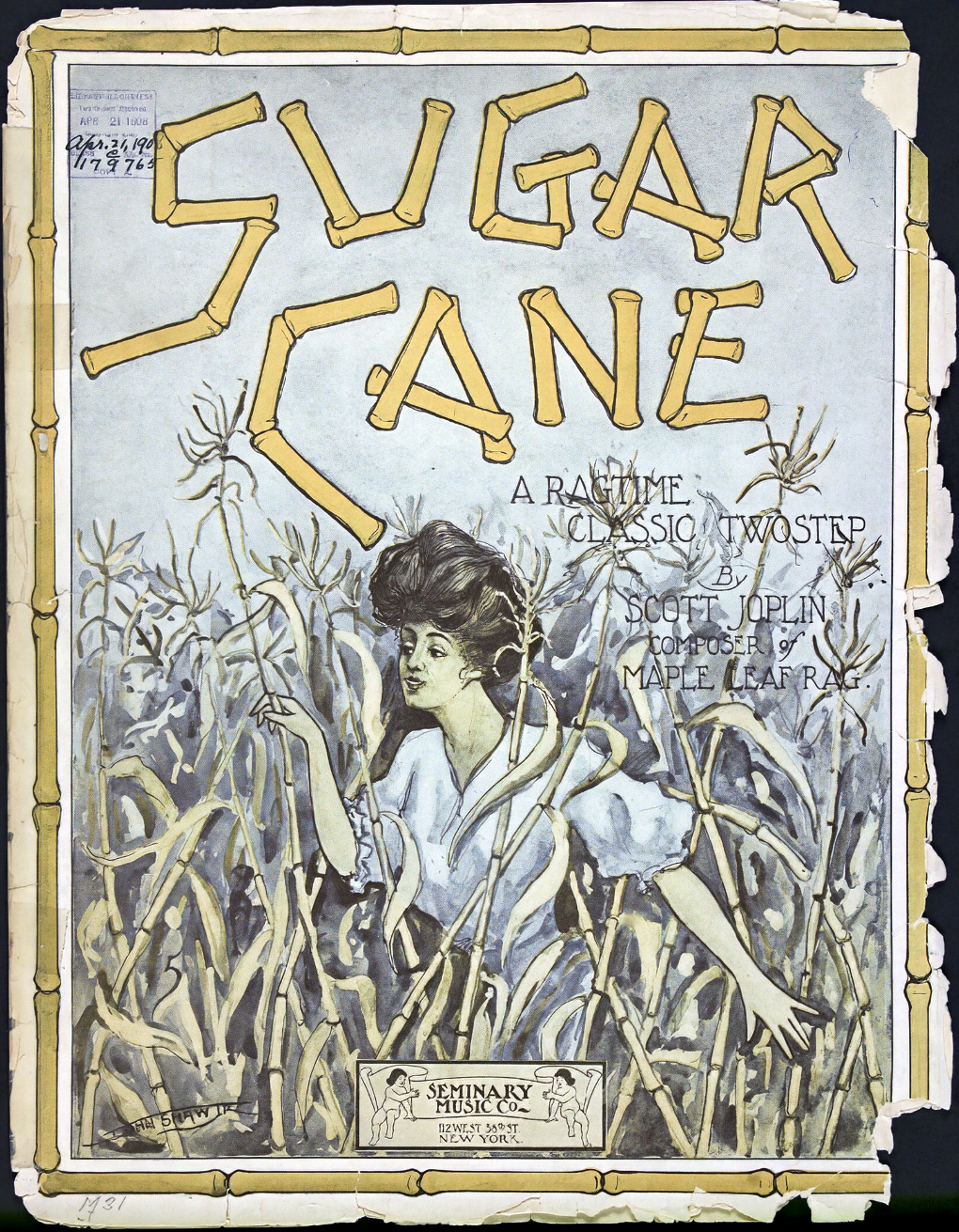
Popularization
Ragtime was the first musical style to achieve widespread popularity beyond the African-American community, stepping boldly across both cultural and racial boundaries. The fact that this style was instrumental and piano based gave ragtime a larger audience outside Black communities than the blues, appealing to the parlor piano tastes of middle America. In fact, by the early 1900s, ragtime had all but taken over the US music publishing industry.
Four of a Kind (1909) | Projection of a desirable lifestyle—jackpot winner—was a popular marketing ploy for piano rags. | Library of Congress
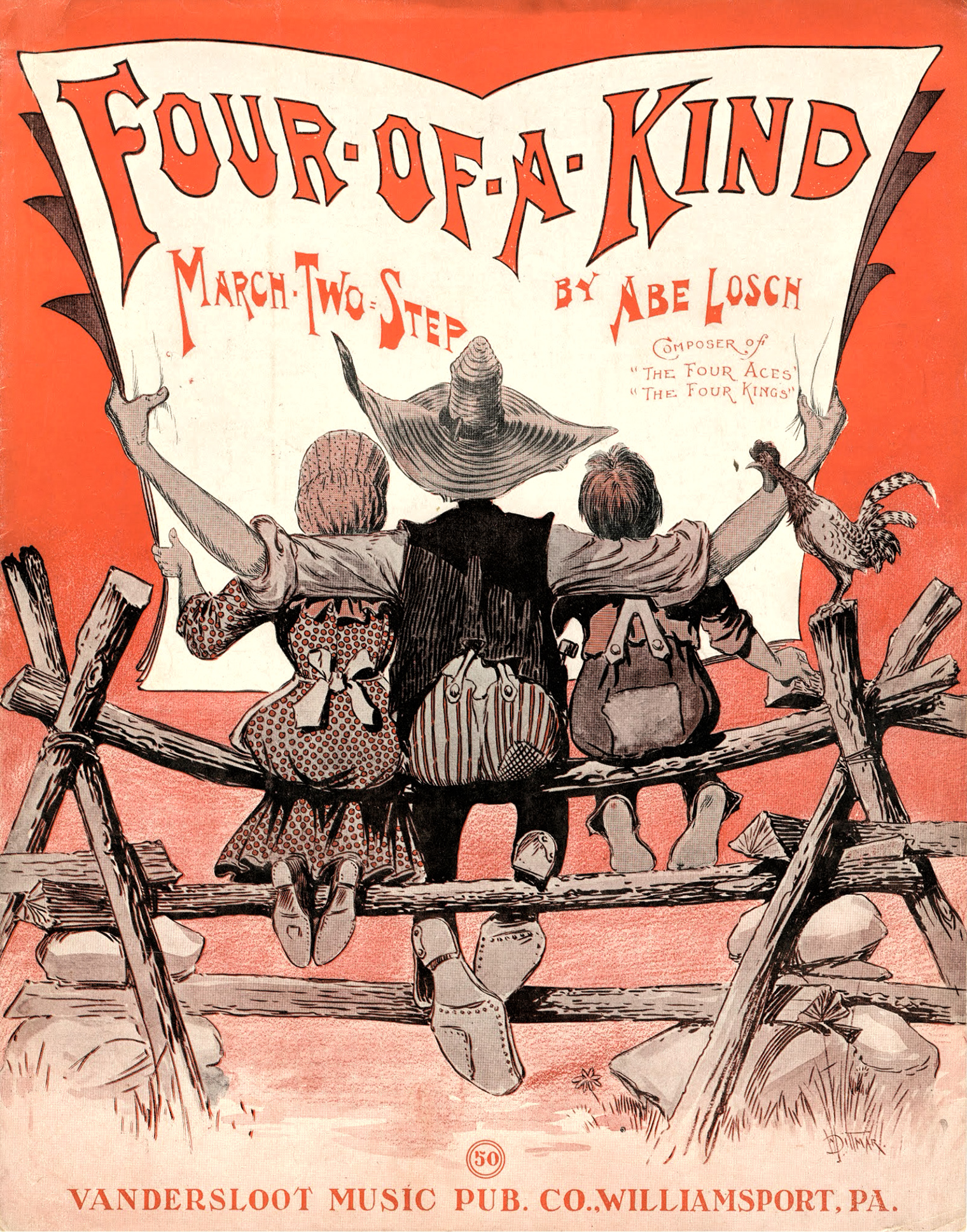
 Rag Style
Rag Style
Simply put, ragtime is a hybrid of African syncopation and European classical and popular music, especially John Philip Sousa marches and two-step dances like the cakewalk. In fact, ragtime sheet music frequency alluded to their march, two-step or cakewalk roots on the title page.
Let's Get Syncopated!The most obvious ragtime trait is syncopated melody. Syncopation disrupts the normal metrical accent pattern by emphasizing typically weak beats or weak parts of the beat, e.g., emphasis on beats 2 and 4 in quadruple meter or emphasis between the beats. Next, ragtime is almost always written in duple or quadruple meter. Accompaniment typically consists of bass notes hitting on strong beats and chords on weak beats: boom-chuck, boom-chuck. Finally, ragtime form was typically a direct transfer of John Philip Sousa's march structure, with use of multiple contrasting sections or strains (similar to sonata form). |
The Entertainer Cover (1902) | One of Joplin's top selling scores. | Library of Congress |
 Scott Joplin
Scott Joplin
The African-American composer, Scott Joplin (1868-1917), although not the first ragtime musician to publish, his innovative creations allowed him to nearly single-handedly define the style. His popular works include Maple Leaf Rag (1899), Gladiolus Rag (1907) and The Entertainer (1902). In 1977, Joplin was awarded the Pulitzer Prize posthumously for his ragtime opera, Treemonisha. The Entertainer, written for piano in 1902, is played here by the Leeward Coast Guitars. Listen for the boom-chuck accompaniment, syncopated melody and call and response between groups of guitars: |
Joplin commemorative stamp issued in 1983 by the USPS. |
The Entertainer | Scott Joplin | Leeward Coast Guitars (2:38)
Heliotrope Bouquet (1907), co-written by Scott Joplin and Louis Chavin, is a wonderful example of a lyrical rag. Originally written for piano solo, here it is arranged for guitar ensemble:
Heliotrope Bouquet | Scott Joplin & Louis Chavin | Leeward Coast Guitars (2:55)
The rag, Solace, was featured in the movie, The String, and is another example of Joplin's lyrical writing.
Solace | Scott Joplin (4:55)
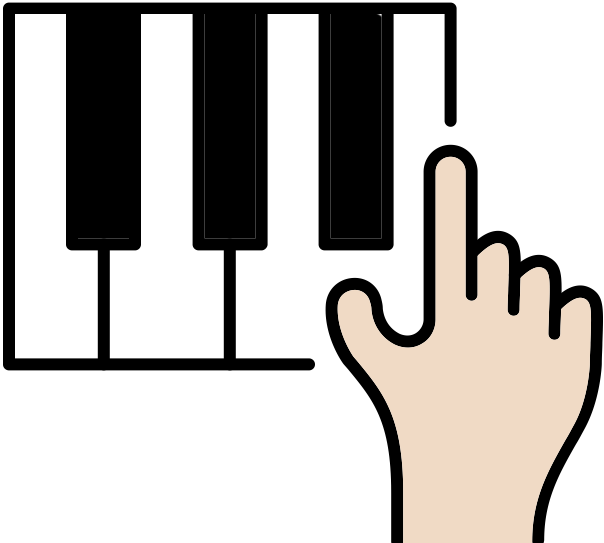 Codetta
Codetta
Ragtime began its mainstream popularity as a solo piano style, but spread to other instruments and ensembles, especially solo guitar, string bands, mandolin clubs and, later, big bands. As a popular style, it faded from public favor by the early 1920s, supplanted by Tin Pan Alley, jazz and other emerging styles.
Rags had a lasting influence on the compositions of twentieth century classical, blues and jazz musicians. Notable classical composers of the era such as Claude Debussy, Erik Satie and Darius Milhaud embraced ragtime, elements of which were evident in their works.
For pianists, the rag remained a stable of their repertoire for well over one hundred years, being the American equivalent of a Mozart minuet or Chopin etude. For the general public, ragtime has gone through multiple revivals in the twentieth century and served dutifully in movie soundtracks and commercial advertising, forever cementing its place in American culture.
Vocabulary
ragtime, rags, Ernest Hogan, Ben Harney, Scott Joplin
Endnotes
†"Theatrical Comment: Use of Vulgar Words a Detriment to Ragtime." New York Age. April 3, 1913. p. 6.
††White, H. Loring. Ragging It: Getting Ragtime Into History. iUniverse, 2005, p. 100.
 |
 |
©Copyright 2018-25 by Peter Kun Frary | All Rights Reserved
